Welcome to the first of a series of columns about comics and graphic novels. Adan Jimenez has loved comics since he was 10 years old, when his cousin, stationed in Japan, sent him a box of comics. He says: "I devoured the box and never looked back."
Jimenez has worked in and around comics his entire adult life, at Midtown Comics in New York City, PopCultureShock.com and Comic Foundry magazine and, in Singapore, at Harris Bookstores, Paradigm Infinitum gaming stores and geek paradise store Planerds.
The aim of this and subsequent Stand Up Comics columns is to highlight comics and graphic novels (and occasionally books about comics and graphic novels) that may have gone under the radar of many booksellers. These books offer many handselling opportunities, as well as (mostly) easy entries for non-comics and graphic novel readers.
Here's a sampling of some solid titles published earlier this year:
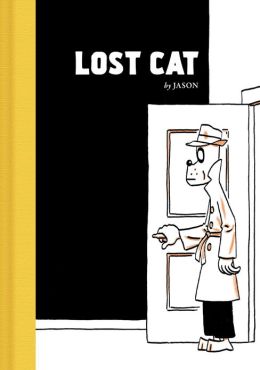 Lost Cat by Jason (Fantagraphics, $24.99, 9781606996423)
Lost Cat by Jason (Fantagraphics, $24.99, 9781606996423)
Jason is a Norwegian cartoonist whose comics have been translated into English for more than a decade. His sparse art, anthropomorphic animals and deadpan humor have graced 17 collections, in which he explores universal truths like loneliness, death, relationships, time travel, and Musketeers on Mars.
Lost Cat is a Humphrey Bogart-style noir detective story featuring a lost cat, a lost woman, a lost painting and a lost life. Private investigator Dan Delon finds a lost cat that leads him to Charlotte Mardou, a French divorcee and bookstore owner, who instantly captivates Delon and then immediately goes missing. Delon spends the rest of the story looking for her and imagining what his life might have been like if she were in it, all while solving other cases. The story ends in a way no one could see coming, but after you read it, you can't imagine it ending any other way.
Audience: People who like noir detective stories and people who like irreverent and deadpan humor.
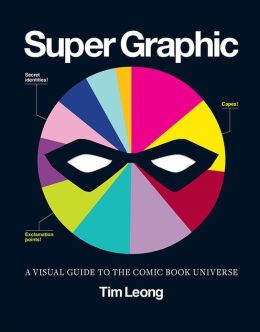 Super Graphic: A Visual Guide to the Comic Book Universe by Tim Leong (Chronicle, $18.95, 9781452113883)
Super Graphic: A Visual Guide to the Comic Book Universe by Tim Leong (Chronicle, $18.95, 9781452113883)
In Super Graphic, which is not really a comic, but a beautiful book about comics featuring innovative infographics, Tim Leong, director of digital design at Wired magazine, put together more than 150 bar charts, pie charts, Venn diagrams, matrices and other kinds of infographics detailing idiosyncrasies of the comics we love to read. These include, but are certainly not limited to: Oppression and Rebellion in Persepolis, the Schedule of a Manga Artist, the Pizzas of the Teenage Mutant Ninja Turtles, the Chris Ware Sadness Scale and my personal favorite, the Politics of Good vs. Evil (full disclosure: this is my favorite because I helped design it while still with Comic Foundry, which Leong founded!).
Leong covers a large swath of the medium, from corporate to independent, superheroes to autobiographies. The book also includes charts on movies and TV series based on comics. It's often hilarious, but the jokes will likely be lost on non-comics readers, unfortunately.
Audience: People who like well-designed infographics and people who want to see the medium they love explained in well-designed infographics.
 B.P.R.D.: 1948 written by Mike Mignola and John Arcudi, art by Max Fiumara (Dark Horse, $17.99, 9781616551834)
B.P.R.D.: 1948 written by Mike Mignola and John Arcudi, art by Max Fiumara (Dark Horse, $17.99, 9781616551834)
Mike Mignola has spent the last two decades creating a fascinating world full of most every monster that has ever been created: from folklore and mythology, from science fiction and fantasy, and even from Universal Studios and the Cthulhu mythos. His famous Hellboy is a demon from the abyss who beats up other monsters.
1948 is the third "historical" BPRD volume about the early days of the Bureau of Paranormal Research and Defense. Professor Trevor Bruttenholm (pronounced "broom") travels to Utah after nuclear bomb tests result in creatures from another world showing up. He attempts to explain this in both scientific and paranormal terms (this may be the first time quantum mechanics and shamanistic rituals have ever been paired). At the same time, the beautiful and brilliant Dr. Anna Rieu, working on the atomic project, hopes to end all nuclear testing.
Readers new to the genre should be able to enjoy this with very little background information. They will likely only wonder why Agent Anders is acting oddly (he was possessed by vampires in BPRD: 1947) and who the creepy girl only Professor Bruttenholm can see is (she is the demon Varvara, Professor Bruttenholm's counterpart in the Soviet Union's version of the BPRD, who first appeared in BPRD: 1946). Otherwise, it should serve as a great jumping-off point for readers not currently immersed in Mignola's monster-filled world.
Audience: People who like '50s-era atomic science fiction and people who love good monster stories.
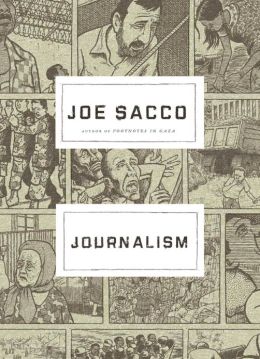 Journalism by Joe Sacco (Metropolitan Books, $22, 9780805097931)
Journalism by Joe Sacco (Metropolitan Books, $22, 9780805097931)
Probably the best known comics journalist in the business, Joe Sacco has reported on the war in Bosnia, the battles and détentes between Palestine and Israel, the first Gulf War, the "sacrifice zones" in the United States, World War II-era Crete and much more.
Journalism collects much of his shorter reportage, including a war crimes trial at the Hague for Dr. Milan Kovacevic, a Bosnian Serb accused of genocide; a return trip to the Palestinian territories to report on Hebron and Gaza; the Chechen conflict and displacement of refugees to Ingushetia; conversations with U.S. marines, Iraqi national guardsmen and Iraqi businessmen suing U.S. Defense Secretary Donald Rumsfeld; African refugees fleeing war and poverty and landing on the island nation of Malta; and, the abject poverty that dalits--the "untouchables" in the Indian caste system--face daily in small villages near and around Lucknow, India.
Sacco is a well-respected journalist, going where few others will and reporting on things many people would rather not be reminded of, but he can be too partisan for my tastes, regardless of whether or not I agree with him. That said, I have been made aware about many things around the world that I probably wouldn't have been if not for him.
Audience: People who want to know a little bit more about disparate parts of the world and people who don't mind some opinion with their news.
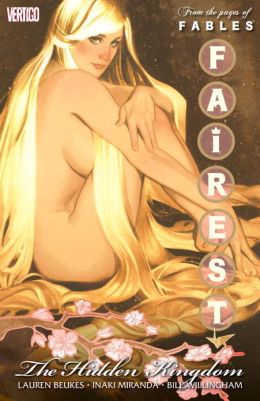 Fairest Vol. 2: The Hidden Kingdom written by Bill Willingham and Lauren Beukes, art by Inaki Miranda and Barry Kitson (Vertigo, $14.99, 9781401240219)
Fairest Vol. 2: The Hidden Kingdom written by Bill Willingham and Lauren Beukes, art by Inaki Miranda and Barry Kitson (Vertigo, $14.99, 9781401240219)
The second comics work by South African journalist and science fiction writer Lauren Beukes is featured in the Fables spin-off Fairest and takes place in the recent past of the Fables universe, before many landscape-altering events. In search of her children, Rapunzel of extremely long hair fame must travel to Japan to face both the literal and figurative demons of her past as she stumbles into the middle of a yokai civil war.
Ricocheting between the recent past (2002) and the distant past (circa 1102), Beukes (with Willingham, in a consultant role) weaves a tale of love, betrayal and war, and still has enough time for Jack Horner to sex up anything that moves. Bonus: every chapter has an appropriately meta-Japanese title, like "Hard-Boiled Wonderland," "Lost in Translation" and "The Bad Sleep Well."
Even though this is the second volume of a spin-off series, The Hidden Kingdom is still a good starting point for new readers because it takes place in the past and doesn't feature a lot of characters already familiar to regular Fables readers. The story will probably require more background information to understand, but it's pretty funny, so this can be forgiven.
Audience: People who love folk tales and mythology in general and people who are interested in reinterpretations of Japanese folk tales and mythology in particular.
 What may be the first of a series of shareholder lawsuits against Barnes & Noble over accounting issues has been filed in New York State Supreme Court. Bloomberg News reported that B&N shareholder David Shaev is asking the court to order B&N "to improve its corporate governance and internal procedures, saying the restatement and the accounting allegations are 'only two symptoms of a pervasive deficiency of internal controls.' "
What may be the first of a series of shareholder lawsuits against Barnes & Noble over accounting issues has been filed in New York State Supreme Court. Bloomberg News reported that B&N shareholder David Shaev is asking the court to order B&N "to improve its corporate governance and internal procedures, saying the restatement and the accounting allegations are 'only two symptoms of a pervasive deficiency of internal controls.' "












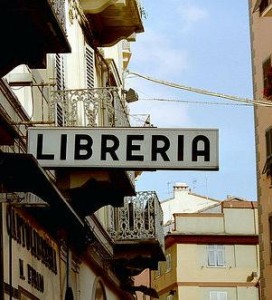 As part of a plan to encourage foreign investment in Italy and promote culture, the Italian government is proposing a
As part of a plan to encourage foreign investment in Italy and promote culture, the Italian government is proposing a 
 For the first time, the Book Industry Study Group is holding the Making Information Pay conference as part of the International Digital Publishing Forum's Digital Book Conference at BookExpo America. The 2014 Making Information Pay conference will be held on the afternoon of Thursday, May 29, the second day of the Digital Book Conference and the day BEA's trade show floor opens. Making Information Pay has been a free-standing event held in the spring.
For the first time, the Book Industry Study Group is holding the Making Information Pay conference as part of the International Digital Publishing Forum's Digital Book Conference at BookExpo America. The 2014 Making Information Pay conference will be held on the afternoon of Thursday, May 29, the second day of the Digital Book Conference and the day BEA's trade show floor opens. Making Information Pay has been a free-standing event held in the spring. Since then, he worked in marketing for several Fortune 500 companies. Around two and a half years ago, McDonald was diagnosed with cancer. Surgery, treatment and a lengthy recovery process made him leave work. About eight months ago, McDonald said, his doctors gave him the "all clear," and he began to think once more about his future.
Since then, he worked in marketing for several Fortune 500 companies. Around two and a half years ago, McDonald was diagnosed with cancer. Surgery, treatment and a lengthy recovery process made him leave work. About eight months ago, McDonald said, his doctors gave him the "all clear," and he began to think once more about his future. Congratulations to our friends at
Congratulations to our friends at 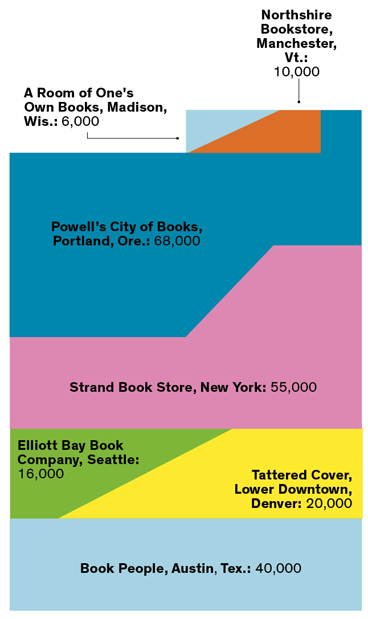
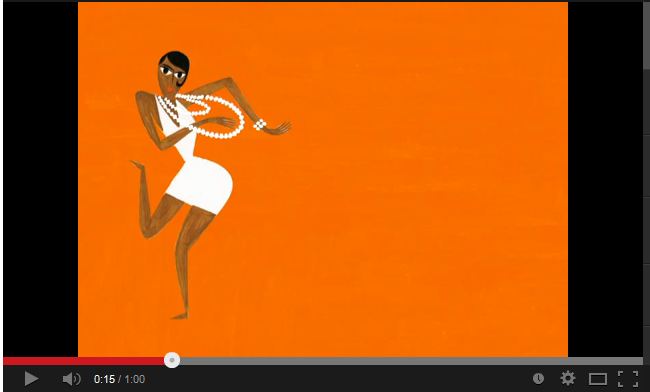 Josephine: The Dazzling Life of Josephine Baker
Josephine: The Dazzling Life of Josephine Baker Shailene Woodley and Ansel Elgort "cozy up on the grass in this first look at the highly anticipated adaptation" of
Shailene Woodley and Ansel Elgort "cozy up on the grass in this first look at the highly anticipated adaptation" of 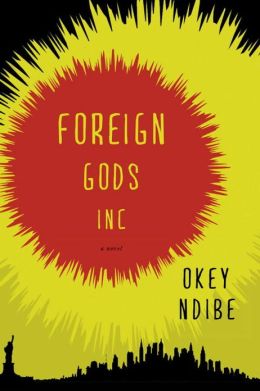 Ike (pronounced ee-kay), the protagonist of Okey Ndibe's Foreign Gods, Inc., is a Nigerian cab driver in New York City with a degree from Amherst who hates the way everyone notices his accent. He's borrowed a fortune to buy an airline ticket back to Nigeria and his remote home village, where he'll steal the wooden god Ngene, then make his fortune selling it to a Manhattan gallery that specializes in exotic deities.
Ike (pronounced ee-kay), the protagonist of Okey Ndibe's Foreign Gods, Inc., is a Nigerian cab driver in New York City with a degree from Amherst who hates the way everyone notices his accent. He's borrowed a fortune to buy an airline ticket back to Nigeria and his remote home village, where he'll steal the wooden god Ngene, then make his fortune selling it to a Manhattan gallery that specializes in exotic deities.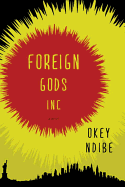
 Lost Cat by Jason (Fantagraphics, $24.99, 9781606996423)
Lost Cat by Jason (Fantagraphics, $24.99, 9781606996423) Super Graphic: A Visual Guide to the Comic Book Universe by Tim Leong (Chronicle, $18.95, 9781452113883)
Super Graphic: A Visual Guide to the Comic Book Universe by Tim Leong (Chronicle, $18.95, 9781452113883) B.P.R.D.: 1948 written by Mike Mignola and John Arcudi, art by Max Fiumara (Dark Horse, $17.99, 9781616551834)
B.P.R.D.: 1948 written by Mike Mignola and John Arcudi, art by Max Fiumara (Dark Horse, $17.99, 9781616551834) Journalism by Joe Sacco (Metropolitan Books, $22, 9780805097931)
Journalism by Joe Sacco (Metropolitan Books, $22, 9780805097931) Fairest Vol. 2: The Hidden Kingdom written by Bill Willingham and Lauren Beukes, art by Inaki Miranda and Barry Kitson (Vertigo, $14.99, 9781401240219)
Fairest Vol. 2: The Hidden Kingdom written by Bill Willingham and Lauren Beukes, art by Inaki Miranda and Barry Kitson (Vertigo, $14.99, 9781401240219)